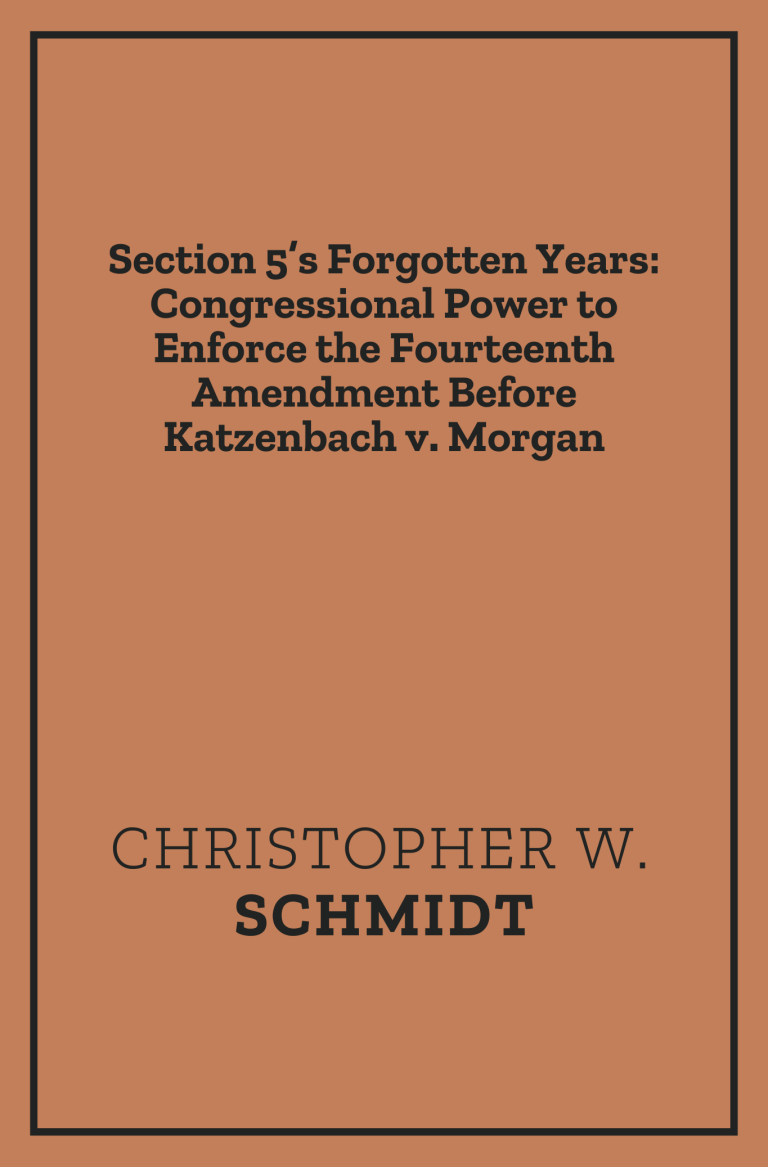From Northwestern University Law Review:
Few decisions in American constitutional law have frustrated, inspired, and puzzled more than Katzenbach v. Morgan. Justice Brennan’s 1966 opinion put forth the seemingly radical claim that Congress—through its power, based in Section 5 of the Fourteenth Amendment, to “enforce, by appropriate legislation,” the rights enumerated in that Amendment—shared responsibility with the Court to define the meaning of Fourteenth Amendment rights. Although it spawned a cottage industry of scholarship, this claim has never been fully embraced by a subsequent Supreme Court majority, and in City of Boerne v. Flores, the Supreme Court rejected the heart of the Morgan decision as subversive of the American constitutional order. Today, Morgan stands largely as an aberration of American constitutional law.
This Article attempts to place Morgan back into the stream of historical development from which it arose. When properly situated in its historical context, Justice Brennan’s opinion appears less puzzling and less aberrational. Morgan in fact built upon several decades of debates in the courts, in Congress, and among legal commentators over the scope of congressional enforcement power under Section 5—debates that largely have been missing from Section 5 scholarship. In reconstructing the history from this period, this Article also identifies the political and legal conditions that supported claims of shared constitutional interpretive responsibility in the past and considers whether these conditions might again be met in the future.

